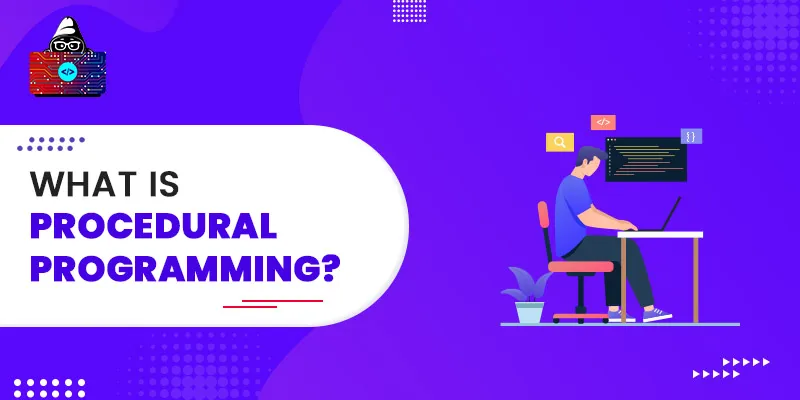At the beginning of the programming journey, especially when we start with high-level programming languages, such as C, C++, Java, and Python, we hear about programming paradigms such as functional, procedural, and object-oriented programming.
When we start programming, we mostly focus on the syntax and the logic of programming more than any other basic technical terms related to a specific programming language. But when we dive deep into the programming world, we start to learn all the basic terminologies and all the other types of techniques used in programming.
A programming paradigm deals with solving a problem using programming languages. There are three types of programming paradigms ; Function, Procedural and Object-Oriented.
Here in this article, we detail procedural programming and its advantages and disadvantages.
What is Procedural Programming?
It is a type of programming paradigm derived from structured programming that focuses on improving the computer program's clarity, quality, and development time. It is based on the concept of the procedure call. We also call it imperative programming.
Also, we sometimes refer to procedures as routines, subroutines, and functions. It also follows the concept of functional programming that helps to fix a block of code and increase its reusability.
Working Mechanism
In procedural programming, the program's code executes linearly with logical steps. It follows the top-to-bottom approach, i.e., the code is written first and executed with some conditions. The procedure calls decide the conditions.
For example, if two functions exist in the program, the main function executes first, and the code will execute from top to bottom.
Procedural vs. Object-Oriented Programming
Often, we compare procedural and object-oriented programming paradigms. This is because both can deal with data, and modules, such as procedural programming functions and object-oriented methods.
Procedures and modules operating on data are treated as separate entities in procedural programming. While in OOPs, the methods that operate on an object's data are considered the same entity.
Procedural Programming Languages
- FORTRAN
- ALGOL
- C++
- C
- Python
Advantages and Disadvantages
Advantages
- Many general-purpose programming languages support it.
- It simplifies the code and makes it easy to understand.
- Implementing algorithms is easy.
- It increases the reusability of the code.
- Uses different parts of memory for different components.
- It flows the program in a linear direction, which makes the same easy to track.
Disadvantages
- It is not very practical with real-world problems.
- It solves real-world problems, but these are generally complex programs.
- Data is vulnerable.
Conclusion
That sums up this article on procedural programming. We hope you know you have a good understanding of the programming paradigm. Like any other programming paradigm, it has its own advantages and disadvantages.
Drop your questions and suggestions in the comments section below.
People are also reading:
- How to Learn Computer Science Programming?
- Top Programming Languages
- Programming Books
- Classification of Computers
- Union vs. Structure
- Call by Value vs. Call by Reference
- How to Write Pseudocode?
- Stack vs. Heap





Leave a Comment on this Post